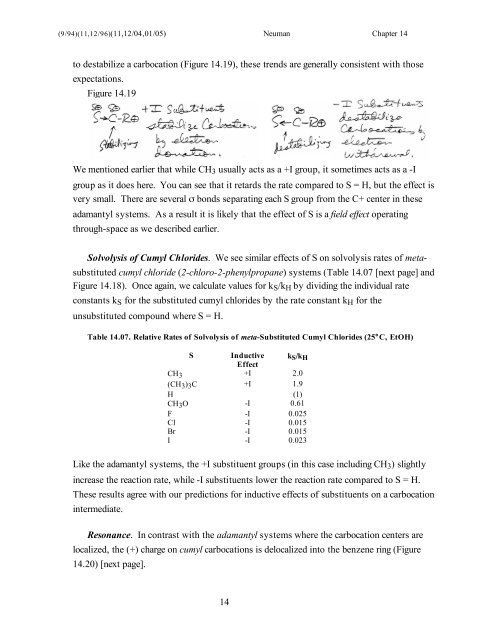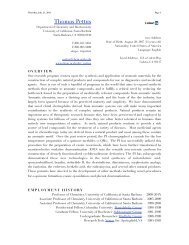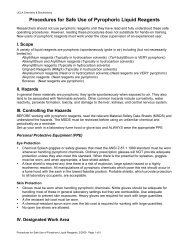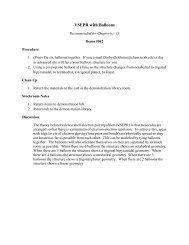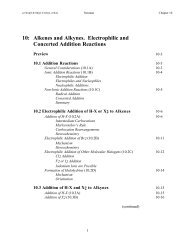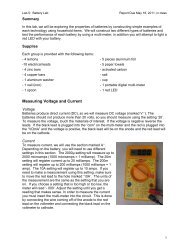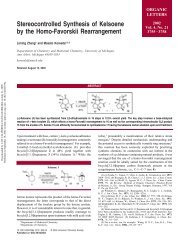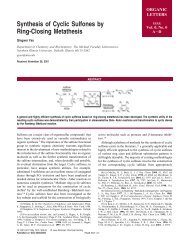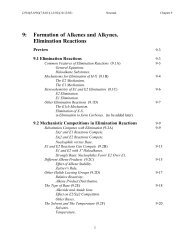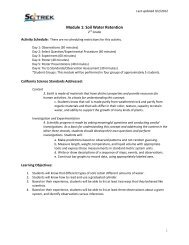14: Substituent Effects
14: Substituent Effects
14: Substituent Effects
Create successful ePaper yourself
Turn your PDF publications into a flip-book with our unique Google optimized e-Paper software.
(9/94)(11,12/96)(11,12/04,01/05) Neuman Chapter <strong>14</strong><br />
to destabilize a carbocation (Figure <strong>14</strong>.19), these trends are generally consistent with those<br />
expectations.<br />
Figure <strong>14</strong>.19<br />
We mentioned earlier that while CH3 usually acts as a +I group, it sometimes acts as a -I<br />
group as it does here. You can see that it retards the rate compared to S = H, but the effect is<br />
very small. There are several σ bonds separating each S group from the C+ center in these<br />
adamantyl systems. As a result it is likely that the effect of S is a field effect operating<br />
through-space as we described earlier.<br />
Solvolysis of Cumyl Chlorides. We see similar effects of S on solvolysis rates of meta-<br />
substituted cumyl chloride (2-chloro-2-phenylpropane) systems (Table <strong>14</strong>.07 [next page] and<br />
Figure <strong>14</strong>.18). Once again, we calculate values for kS/kH by dividing the individual rate<br />
constants kS for the substituted cumyl chlorides by the rate constant kH for the<br />
unsubstituted compound where S = H.<br />
Table <strong>14</strong>.07. Relative Rates of Solvolysis of meta-Substituted Cumyl Chlorides (25°C, EtOH)<br />
S Inductive<br />
Effect<br />
kS/kH<br />
CH3 +I 2.0<br />
(CH3)3C +I 1.9<br />
H (1)<br />
CH3O -I 0.61<br />
F -I 0.025<br />
Cl -I 0.015<br />
Br -I 0.015<br />
I -I 0.023<br />
Like the adamantyl systems, the +I substituent groups (in this case including CH3) slightly<br />
increase the reaction rate, while -I substituents lower the reaction rate compared to S = H.<br />
These results agree with our predictions for inductive effects of substituents on a carbocation<br />
intermediate.<br />
Resonance. In contrast with the adamantyl systems where the carbocation centers are<br />
localized, the (+) charge on cumyl carbocations is delocalized into the benzene ring (Figure<br />
<strong>14</strong>.20) [next page].<br />
<strong>14</strong>


